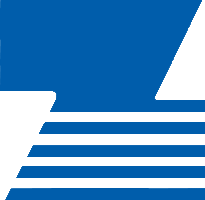In 2015, Ford opened its Innovation and Research Centre in Palo Alto, California. Employing over 100 researchers, this Centre is looking at ways to improve our mobility, both environmentally and efficiently. And Ford doesn’t just look at the way cars move in our cities, but also bicycles. Their project, the InfoCycle project, tracks the mobility of bicycles in cities, one being, San Francisco. They track the increased challenges facing growing urban populations in order to develop new ideas for increasing roadside safety, reducing traffic congestion, and enhancing environmental impact.
This project is a two-part system, a device that holds sensors for collecting data from a bicycle and its environment and an application that collects and visualizes the data. To bridge these two elements, the team used OpenXC, an open source hardware and software platform that Ford introduced in 2013. OpenXC was originally created to allow developers access to a wide range of vehicle data, and the same concept was used for Info Cycle. The telematic sensoring device is attached to the bicycle and transmits data via Bluetooth to a smartphone, where it is available for analysis. When brought to scale, the project will include hundreds of devices collecting data from bicyclists in defined geographic areas, creating a map of conditions ranging from fluctuations in ambient light and temperature to average speeds and the most common times and locations of emergency stops.
Another innovation is Ford’s Chariot shuttle service. Operating in New York City, this service provides:
- in-app ride booking for first- and last-mile commuting solutions (places where public transportation miss), and the potential to reach underserved areas
- a flat rate of USD $4 per ride; commuters can crowd-source additional routes in and around the city
- New York marks the third market for Chariot’s expansion as Ford grows its mobility services; Chariot plans to have 60 vehicles in operation by fall.
In 2016, average weekday ridership on the New York subway was 5.7 million people – the highest since 1948, according to the New York Metropolitan Transit Authority. Annual ridership topped 1.7 billion.
Not only does the sheer number of commuters make getting around difficult, but access for people in the city’s transit deserts is a particular challenge. While 94 percent of residential units in Manhattan are within half a mile of a subway stop, only 54 percent of units in Queens are, according to research by New York University’s Furman Center. For many, simply getting to a transit point can be difficult.
“We know how important it is for everyone to be able to get around effectively – especially in densely populated places like New York,” said Jessica Robinson, director, Ford City Solutions. “Chariot is one way we’re trying to help cities accommodate their residents and ensure people aren’t sacrificing their needs as a result of limited mobility options.”
These are just two examples of how Ford Innovation is making meaningful strides in helping people move in our cities.
Source: www.ford.ca and corporate.ford.com

